When it comes to vacationing styles, everybody has their preferences. Are you looking to unwind or to get your adrenaline pumping? Do you want to share your adventure with others, or is disconnecting from online life your goal? Hawai‘i has ample options for all types of travel styles, including a wide array of beaches. Many travelers seek a stretch of sand that feels deserted, while others find comfort in having fellow beachgoers nearby. If you’ve got the time and drive (and a rental car), you can find the spots that feel like your own idea of paradise. Read on to find our top picks for each island’s beaches where you’ll either feel one with nature or like you’re part of the scene.
Kaua‘i
Off the Grid—Lepe‘uli Beach (aka Larsen’s Beach)
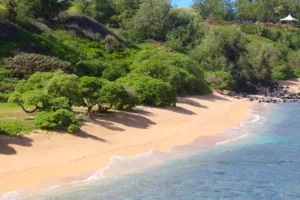 This splendidly isolated beach has crystal-clear water, lots of beach combing and seclusion. The English name comes from a former manager at Kilauea Plantation named L. David Larsen (the rascal who introduced the hated, thorny blackberries to Koke‘e). Larsen’s is about 20 minutes north of Kapa‘a and can be accessed by walking down a county access trail. Off to the right is a bunch of lava rocks that make for good snorkeling if conditions are right. To the left is a long crescent of sand broken by occasional outcroppings of rock and reef. Underwater topography creates good conditions for beachcombing. Pakala Point is on the left side where the first beach ends and lava rock protrudes out into the ocean. Just before these rocks is Pakala Channel. Most of the water you see breaking over the reef drains through this channel; therefore, don’t swim in or near the channel.
This splendidly isolated beach has crystal-clear water, lots of beach combing and seclusion. The English name comes from a former manager at Kilauea Plantation named L. David Larsen (the rascal who introduced the hated, thorny blackberries to Koke‘e). Larsen’s is about 20 minutes north of Kapa‘a and can be accessed by walking down a county access trail. Off to the right is a bunch of lava rocks that make for good snorkeling if conditions are right. To the left is a long crescent of sand broken by occasional outcroppings of rock and reef. Underwater topography creates good conditions for beachcombing. Pakala Point is on the left side where the first beach ends and lava rock protrudes out into the ocean. Just before these rocks is Pakala Channel. Most of the water you see breaking over the reef drains through this channel; therefore, don’t swim in or near the channel.
The water leading just up to the channel moves so swiftly at times that it seems more like rapids than a rip current. If the ocean is calm and you stay away from the channel, if the tide is right and you have some experience snorkeling, this place can be a snorkeler’s paradise. Lots of coral and fish in shallow, crystal-clear water greet the eye. Relatively few beachgoers use this beach during the week. This beach is not a swimming beach, just for snorkeling, due to the sharp reefs and shallow water. One thing that can be very cool—if you’re careful—is to get in the water at the southeast end (where the trailhead is) and let the current take you toward (but not into!) the Pakala Channel. Then get out and walk back.
Boat Tours
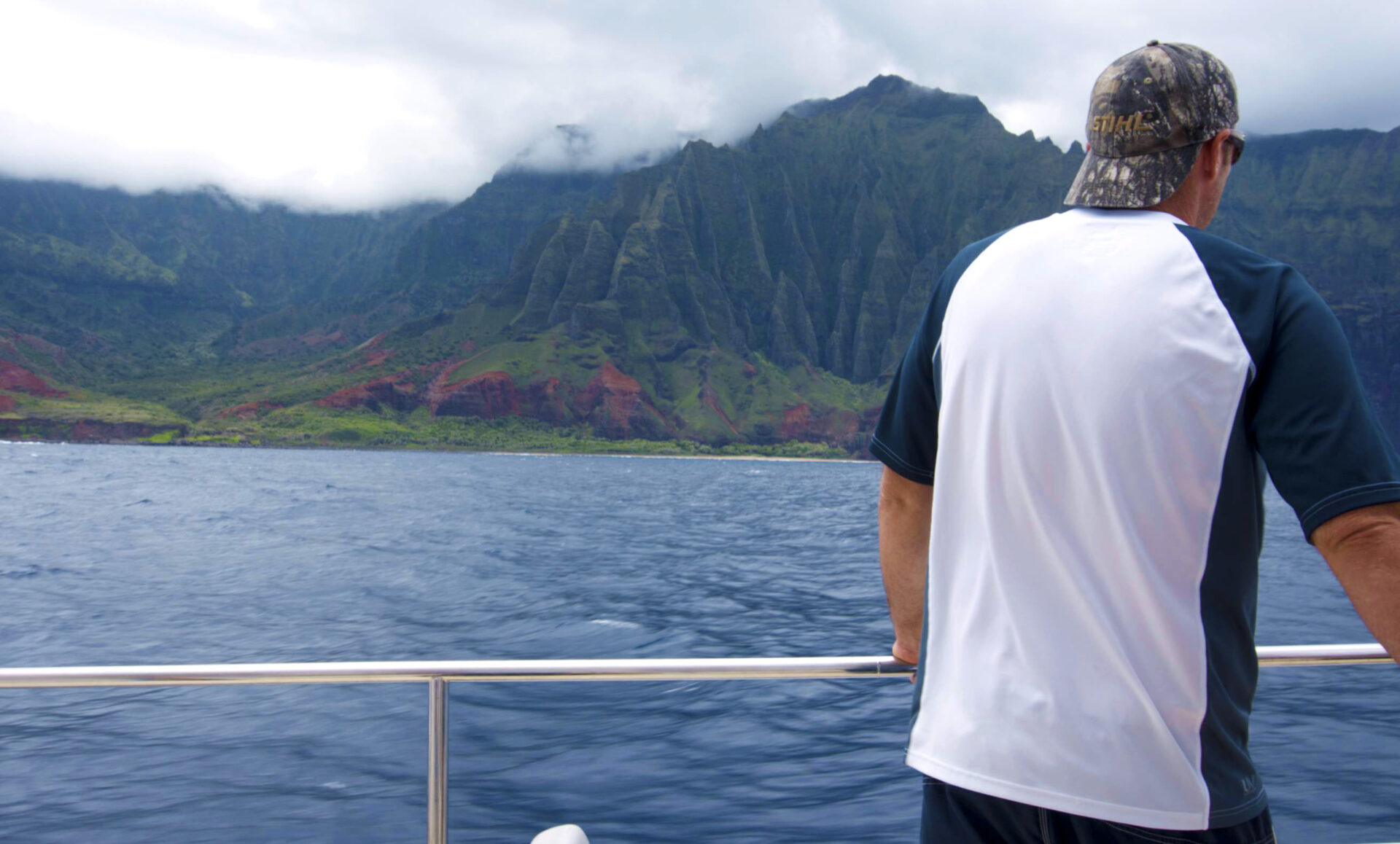
Makana Charters
Makana Charters offers a variety of boat tours with their fleet of power catamarans. They use a 32-foot power cat for 12 people, a 49-foot power cat for up to 32 people, a 47-foot Seiko that holds 36 people (great for those prone to seasickness), and a 34-foot Seiko for 16 people. The tours are relaxed and personable, offering a more intimate experience compared to other tours that can be more crowded.
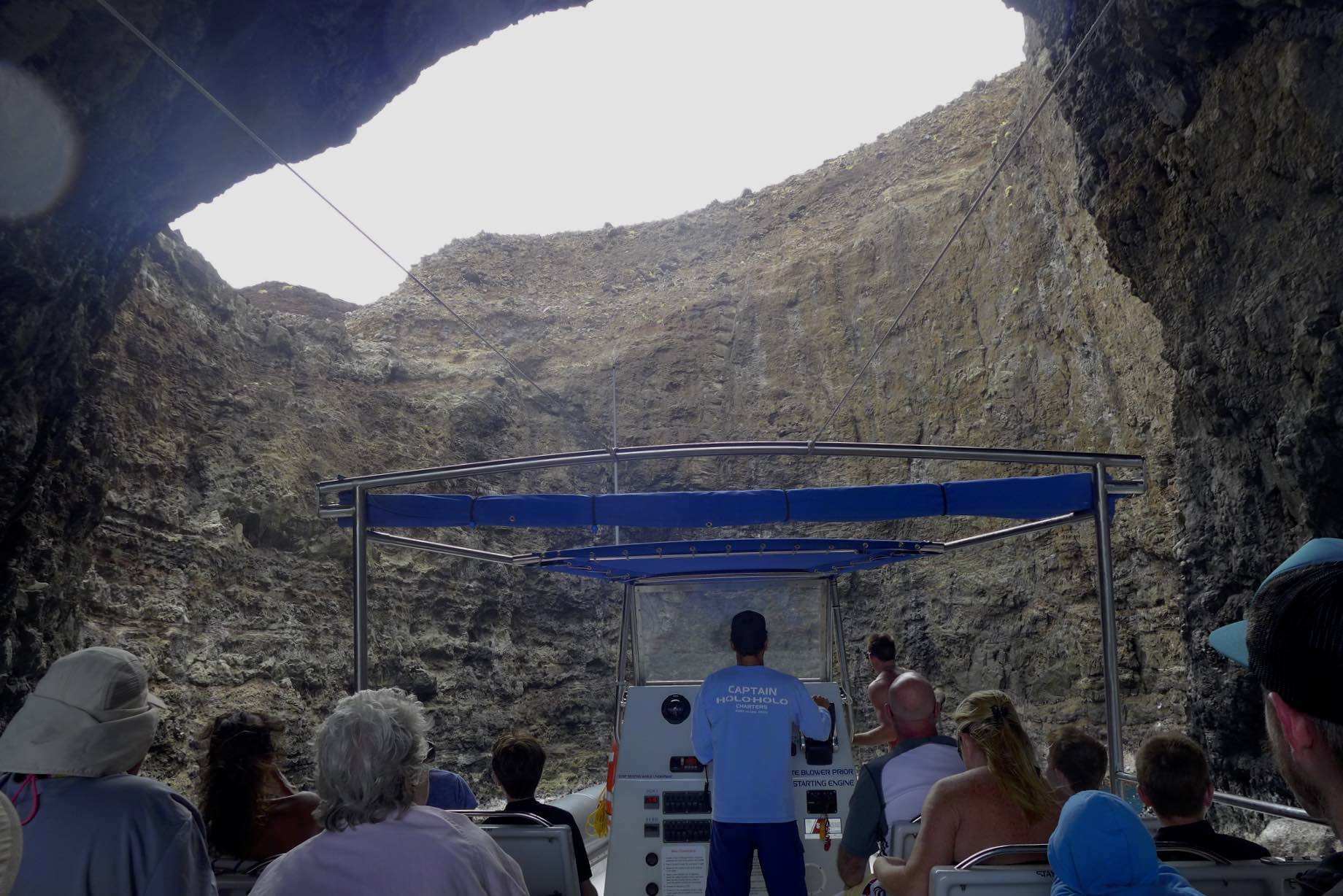
Holo Holo Charters
Holo Holo Charters offers a 65-foot power catamaran for their tours. Their standout trip is a 7-hour tour to the “forbidden” island of Ni‘ihau. The tour includes a visit to Kalalau Beach on Na Pali, then snorkeling at Ni‘ihau, known for its clear waters and abundant fish.
In the Crowd—Po‘ipu Beach Park
This is the major center of beach activity on the south shore. The swimming is nearly always safe just to the left of the sandbar (this type of sandbar is called a tombolo—useful info for your pub’s trivia night), which disappears for stretches after major storms and during those times can bring a rip current. Farther to the left is an area semi-protected by a breakwater along with some shade. It’s very popular with children and those just learning to snorkel. There’s full park facilities such as restrooms, showers and drinking water, as well as lifeguards present. Plus, there’s a some dining options just behind the beach. Overall, this park is a nice place to enjoy the ocean, though it can get very crowded. The far right side isn’t as protected but features excellent snorkeling with lots of fish and good swimming if the surf isn’t high.
O‘ahu
Off the Grid—Kahuku Golf Course Beach
Think of this beach as a rose with thorns: Look, but don’t touch. More specifically, don’t swim. That’s because there’s a pretty impressive rip current that’s usually present here. But the good news is that the beach is often empty and exhibits a certain wildness. Sand and sandstone beachrock are the ingredients topped off by ever-present wind. You can walk along the shoreline for miles here—so much so that we’ve detailed it as a hike since access to it is a bit awkward. It’s pretty far from Waikiki—you’ll find it at the northern tip of the island.
In the Crowd—Waimea Bay Beach Park
Say the words “Waimea Bay” to surfers, and their eyes will light up. This is the most famous big wave surf site in the world. In the winter, waves 20–40 feet high are not uncommon. Visitors and locals alike delight in coming here during these swells, lining the shoreline and road, and watching the best surfers in the world take their chances sliding down these four-story walls of water. A collapsing wave can snap boards, snap people, or hold ’em underwater for minutes at a time. If you’re on O‘ahu in the winter and the surf is giant, this is where you want to go. (Other surf sites close out with big surf.) Needless to say, you don’t want to get anywhere near the water during big winter surf. You’ll die… period… no kidding.
Land Tours
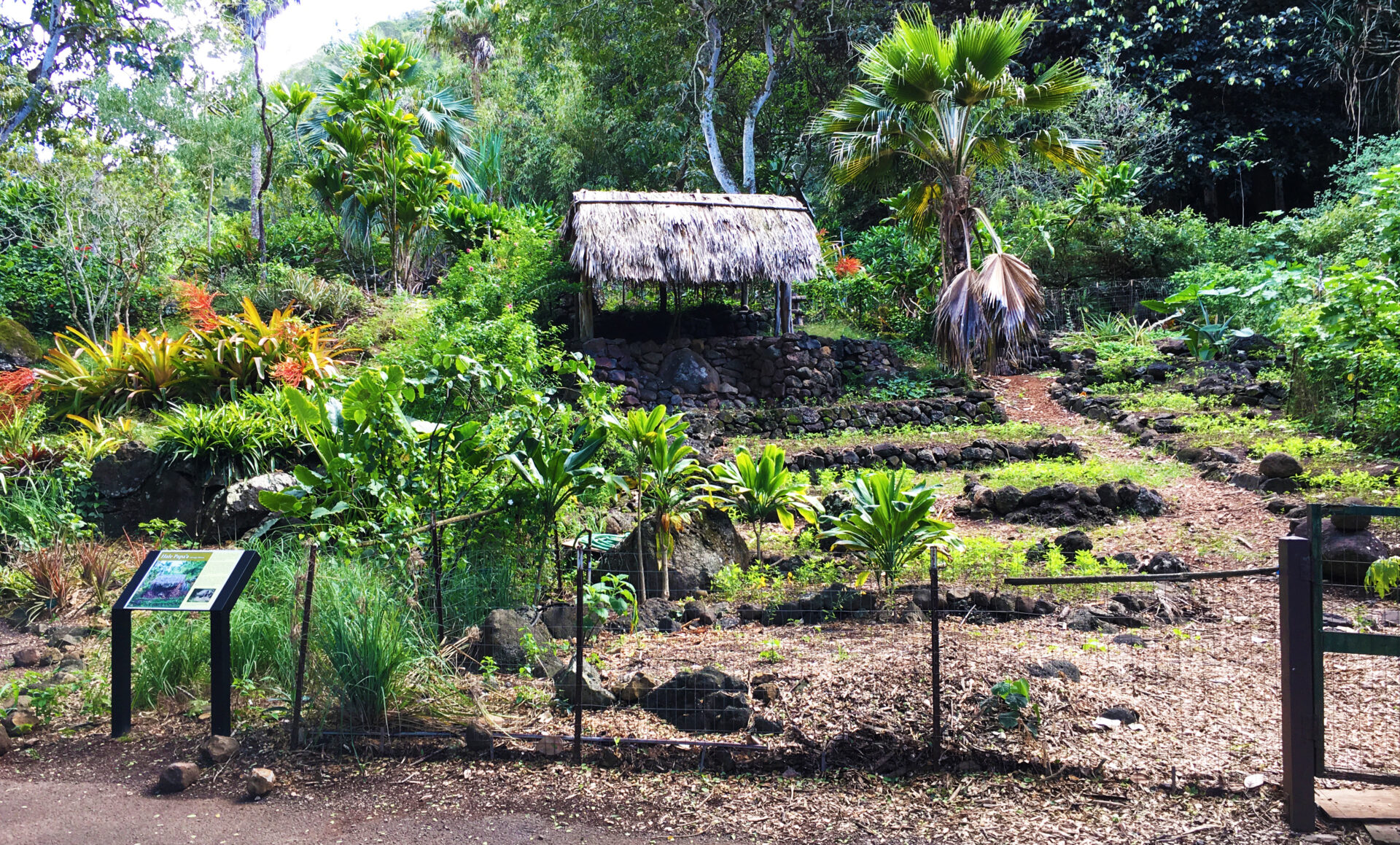
Waimea Valley: General Admission
Waimea Valley, previously known as Waimea Falls Adventure Park, is now a botanical garden managed by the Office of Hawaiian Affairs. This 1,875-acre garden features a tranquil setting along the Waimea River and a 40-foot-high waterfall.
What a shock to come here in the summer and find placid, lake-like water. The area around the southern end (left side) of the bay offers utterly magnificent snorkeling when calm. The entire area leading to the offshore islets is studded with fish, interesting terrain and turtles. In fact, turtles are plentiful from here all the way to Turtle Beach, but the water gets cloudy after you leave the bay—from Uppers to Chun’s Reef—due to intruding basal springs. Stay in Waimea Bay and around the islands for the best snorkeling during calm seas. The giant rock near the left end of the beach is a popular cliff-diving spot. People often climb up from the shore-facing side and leap off the back/right end. It’s a pretty far drop, and you’re on your own in evaluating it. Jumpers have to walk past the No Jumping sign to get to the top.
Maui
Off the Grid—Ma‘alaea Bay
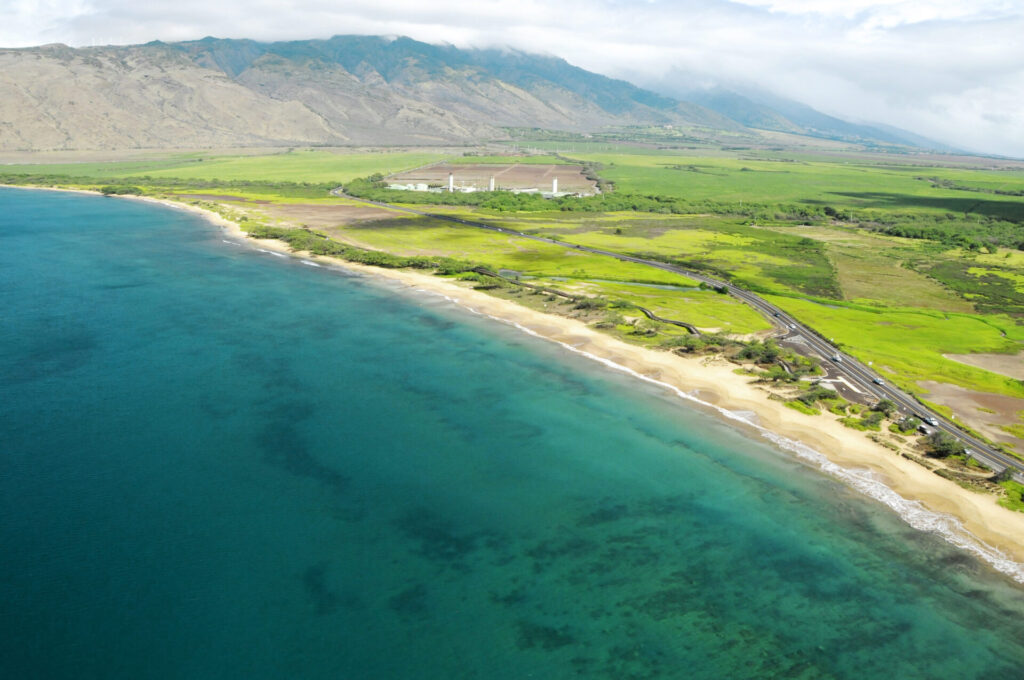 If you’re looking for a long beach stroll, have we got a beach for you. Stretching from the end of Hauoli Street at Haycraft Park for 2.5 miles down to north Kihei, this beach is a walker’s delight with no buildings on the beach. The waters off the Ma‘alaea end aren’t the friendliest, and winds and sometimes seaweed can be irritating, but beach strolls are great here. As you near Kihei, a portion of the shore is known as Sugar Beach. Here you can sometimes rent windsurfing boards and other beach paraphernalia. Be careful on the soft sand beyond the tide line as occasional kiawe trees (an odd choice to plant behind a beach) sprinkle painful thorn-filled twigs on the sand. Also—and there’s no good way to say this—remote parts of the beach sometimes attract…dirtbags who come out from the trees and harass lone beachgoers.
If you’re looking for a long beach stroll, have we got a beach for you. Stretching from the end of Hauoli Street at Haycraft Park for 2.5 miles down to north Kihei, this beach is a walker’s delight with no buildings on the beach. The waters off the Ma‘alaea end aren’t the friendliest, and winds and sometimes seaweed can be irritating, but beach strolls are great here. As you near Kihei, a portion of the shore is known as Sugar Beach. Here you can sometimes rent windsurfing boards and other beach paraphernalia. Be careful on the soft sand beyond the tide line as occasional kiawe trees (an odd choice to plant behind a beach) sprinkle painful thorn-filled twigs on the sand. Also—and there’s no good way to say this—remote parts of the beach sometimes attract…dirtbags who come out from the trees and harass lone beachgoers.
Surfing
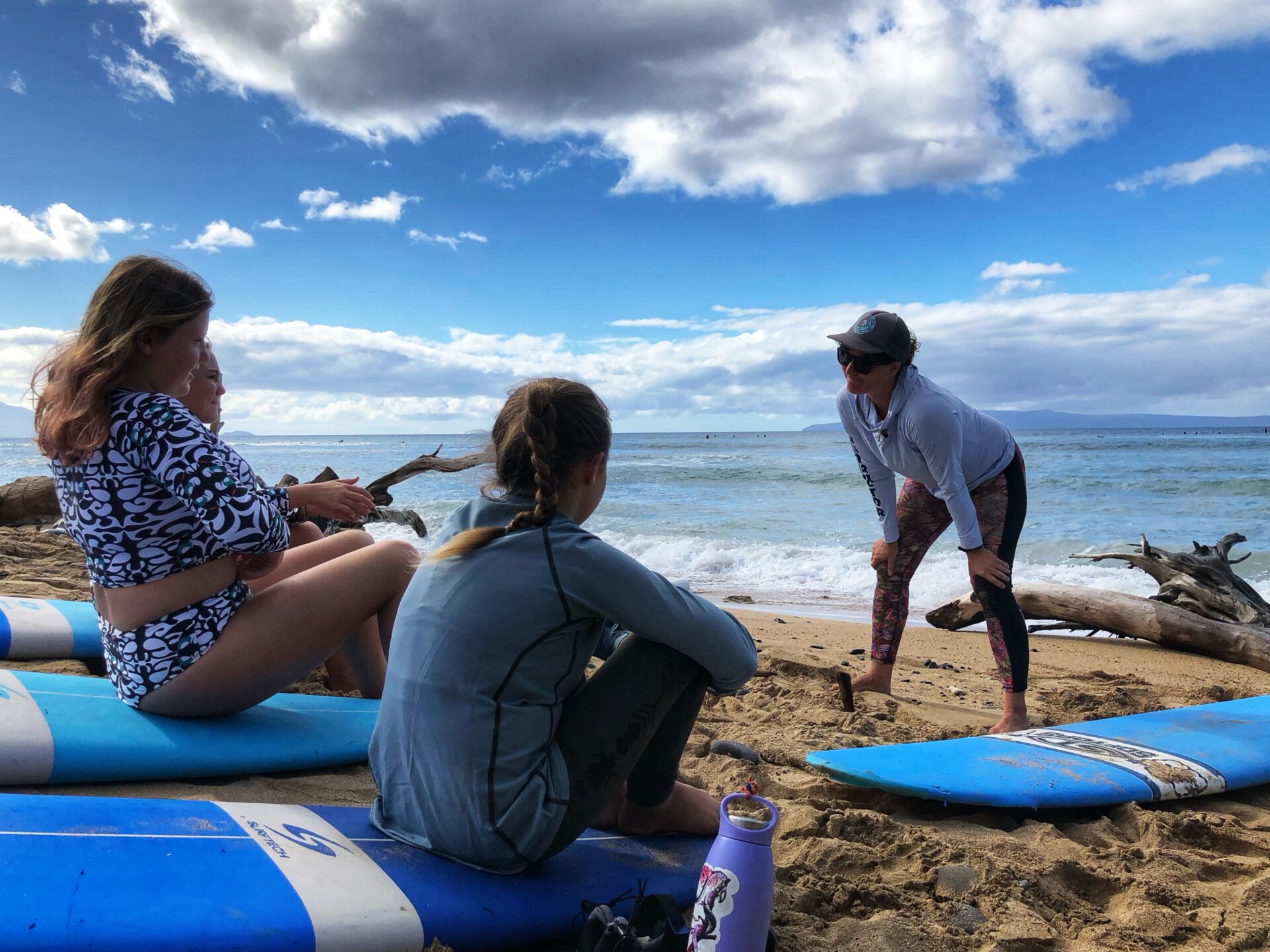
Rivers to the Sea: Group Surf Lesson
In the Crowd—Kapalua Beach
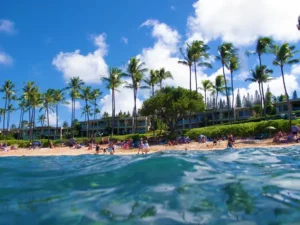 Well known as one of the best swimming beaches on Maui, the bay is usually very protected, making timid swimmers happy. Consistently one of the best beaches for kids due to the protected bay, though it can quickly feel crowded. The water isn’t necessarily the clearest, so snorkeling is often not that hot unless you swim around the point on the right side of the bay. Known as “Cliff House,” this cove tends to be much clearer with higher fish counts. Just watch out for the young’uns who use the cliffs to leap into the cove. You’ll do well to bring your water shoes so you can walk about in the ocean without fear of stubbing your toe. But Kapalua is a great place to wade into the ocean without worrying about getting beaten up by the surf most of the time, and the palm trees behind the beach are very picturesque (helping to disguise the surprisingly ugly, ultra-expensive condos there).
Well known as one of the best swimming beaches on Maui, the bay is usually very protected, making timid swimmers happy. Consistently one of the best beaches for kids due to the protected bay, though it can quickly feel crowded. The water isn’t necessarily the clearest, so snorkeling is often not that hot unless you swim around the point on the right side of the bay. Known as “Cliff House,” this cove tends to be much clearer with higher fish counts. Just watch out for the young’uns who use the cliffs to leap into the cove. You’ll do well to bring your water shoes so you can walk about in the ocean without fear of stubbing your toe. But Kapalua is a great place to wade into the ocean without worrying about getting beaten up by the surf most of the time, and the palm trees behind the beach are very picturesque (helping to disguise the surprisingly ugly, ultra-expensive condos there).
Big Island
Off the Grid—Honomalino Bay
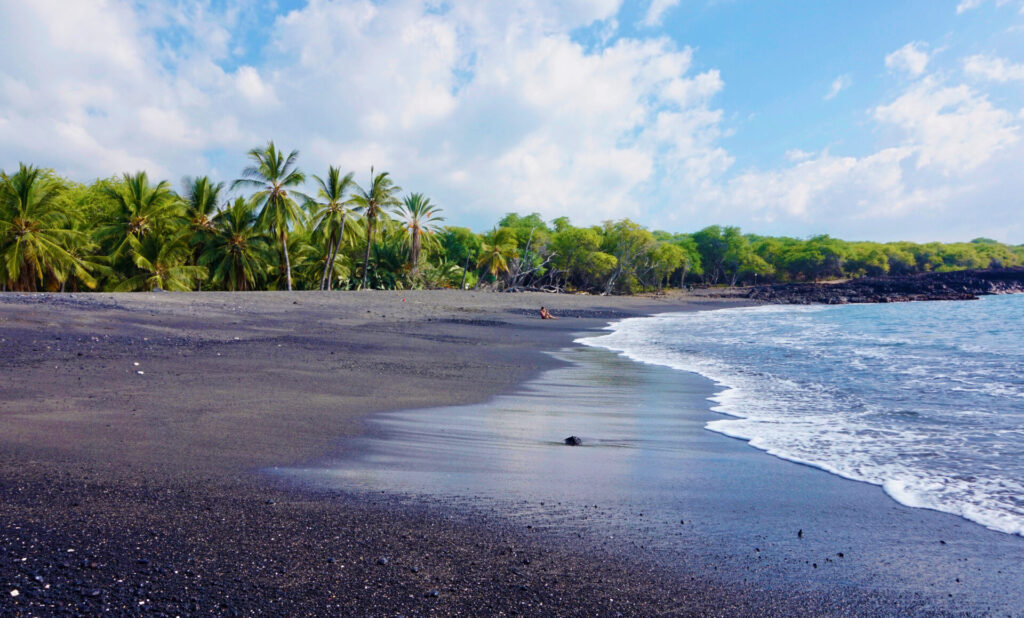 Ask most people who live here where Honomalino is, and they’ll probably tell you it’s on Maui. This lovely black-and-white sand beach is 150 yards or so long, backed by scads of coconut trees, decent swimming when calm (which is often), and it’s usually deserted. It’s a 20-minute walk from your car. If tide is up, you may get your feet wet. About 3 to 4 minutes into the trail after some tide-pools and a palm-backed spit of sand, follow the fenceline on your left up and over the black rock at the back of the beach and continue south for 15 minutes. There may be a few fallen trees to hop over. The snorkeling on the right side of the bay in the cluster of rocks is interesting when calm. If you plunge your hand into the sand at the water’s edge at the south end of the beach, the sand’s cold. That’s freshwater (called a basal spring) percolating into the sand from below.
Ask most people who live here where Honomalino is, and they’ll probably tell you it’s on Maui. This lovely black-and-white sand beach is 150 yards or so long, backed by scads of coconut trees, decent swimming when calm (which is often), and it’s usually deserted. It’s a 20-minute walk from your car. If tide is up, you may get your feet wet. About 3 to 4 minutes into the trail after some tide-pools and a palm-backed spit of sand, follow the fenceline on your left up and over the black rock at the back of the beach and continue south for 15 minutes. There may be a few fallen trees to hop over. The snorkeling on the right side of the bay in the cluster of rocks is interesting when calm. If you plunge your hand into the sand at the water’s edge at the south end of the beach, the sand’s cold. That’s freshwater (called a basal spring) percolating into the sand from below.
Kayaking
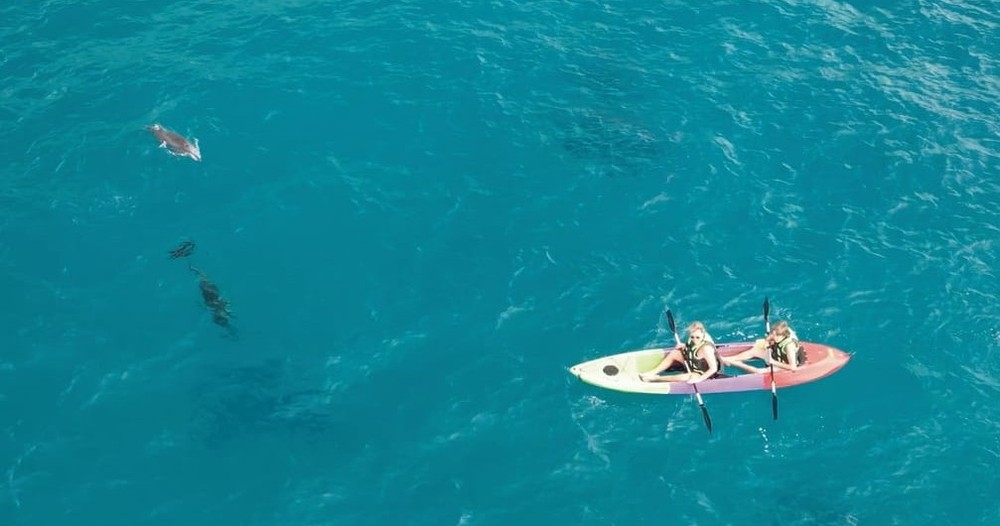
Clear Bottom Kayak Rentals
Explore Hawai’i’s waters with Clear Bottom Kayaks, perfect for viewing above and below simultaneously. Enjoy underwater vistas through a 2’ x 9’ window, showcasing coral reefs, colorful fish, honu (green sea turtles), eels, and urchins.
In the Crowd—Hapuna Beach
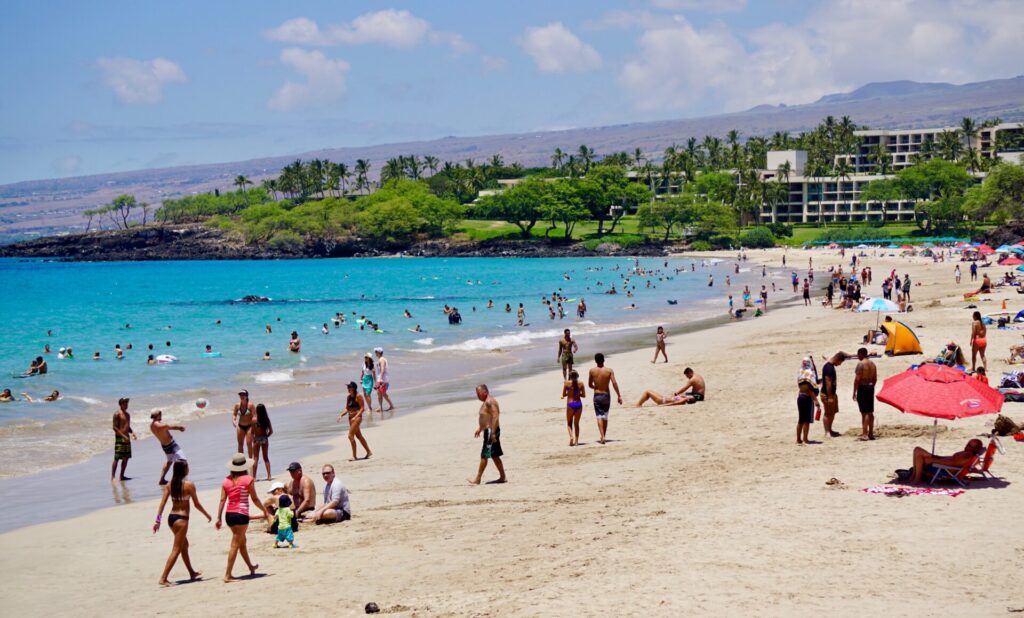 If you close your eyes and picture a perfect beach, there’s a good chance you’ll see Hapuna in your mind’s eye. Half a mile long and 200 feet wide during the summer, beautiful Hapuna is the ultimate frolicking beach. You know how frenzied dogs can get when they go to the beach? That’s how most people act when they come to Hapuna or Mauna Kea Beach. It’s a beach to savor. Fine golden sand slopes gradually into the ocean. Clean, clear water and excellent swimming conditions during calm seas, full facilities, easy access and gorgeous scenery. The boogie boarding here, when the surf’s not too high, is exceptional. These are some of the elements that account for the fact that Condé Nast Traveler magazine has often voted this beach the best in the entire nation. During the week it usually isn’t too crowded, but weekends and holidays bring lots of locals who know a great beach when they see one. Most people who live here bring their guests to Hapuna at least once to gloat. The north lifeguard tower is near the sign saying that there’s no lifeguard on duty. Swimming is not safe during periods of high surf, which will kick the living daylights out of you. Also note that the wind sometimes kicks up in the afternoon. We’ve noticed that the southernmost (left) part of the beach is usually more protected during strong winds, but the north end is usually less crowded. The only shade on the beach is a tree at the southern end. (Though there are shaded pavilions behind the beach.)
If you close your eyes and picture a perfect beach, there’s a good chance you’ll see Hapuna in your mind’s eye. Half a mile long and 200 feet wide during the summer, beautiful Hapuna is the ultimate frolicking beach. You know how frenzied dogs can get when they go to the beach? That’s how most people act when they come to Hapuna or Mauna Kea Beach. It’s a beach to savor. Fine golden sand slopes gradually into the ocean. Clean, clear water and excellent swimming conditions during calm seas, full facilities, easy access and gorgeous scenery. The boogie boarding here, when the surf’s not too high, is exceptional. These are some of the elements that account for the fact that Condé Nast Traveler magazine has often voted this beach the best in the entire nation. During the week it usually isn’t too crowded, but weekends and holidays bring lots of locals who know a great beach when they see one. Most people who live here bring their guests to Hapuna at least once to gloat. The north lifeguard tower is near the sign saying that there’s no lifeguard on duty. Swimming is not safe during periods of high surf, which will kick the living daylights out of you. Also note that the wind sometimes kicks up in the afternoon. We’ve noticed that the southernmost (left) part of the beach is usually more protected during strong winds, but the north end is usually less crowded. The only shade on the beach is a tree at the southern end. (Though there are shaded pavilions behind the beach.)
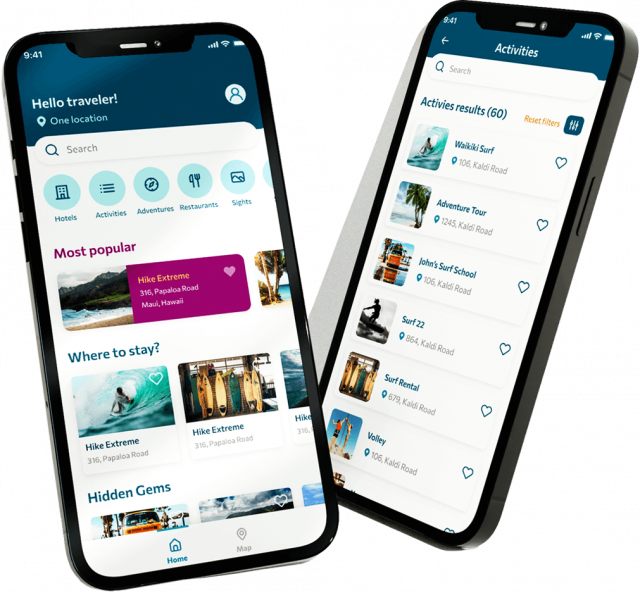

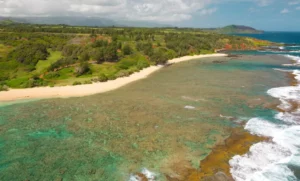
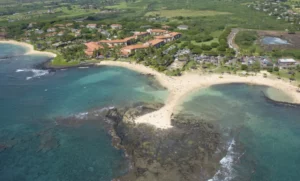
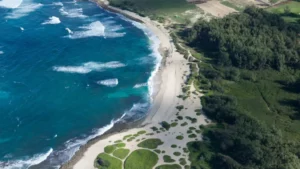
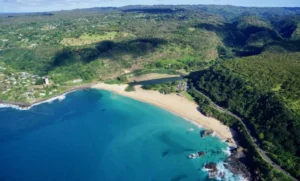
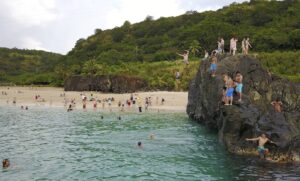


0 Comments